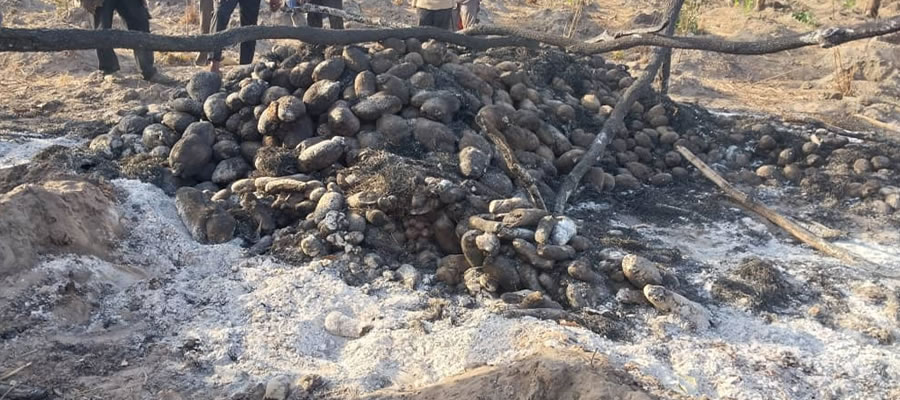

The Eastern part of the then Krachi District which is now Krachi East Municipal had a population of 45914 in 1984 (segregated from the then Krachi District). The 2000 Population and Housing Census put the population figure for Eastern part at 75,058, (segregated from the then Krachi District). The current projected population based on 1984 and 2000 Population and Housing Census put the population figure for 2006, 2007, 2008 and 2009 at 88,789; 91,310; 93,903 and 96,569 respectively. This indicates that the district population had grown at an increasing rate of 2.8% over a 16 year period (1984-2000). This is a rather low growth rate compared to other rural districts in the country.
It is also useful to add that giving the general population growth rate of 2.8%, population growth at the rural areas is quite higher than those at the urban settlements. This may be attributed to the absence of recreational facilities in the rural areas and the low levels of implementing national population issues in those areas. The population density for the planned period stands at 35.12; 36.12; 37.15 and 38.20 persons per square kilometer for 2006, 2007, 2008 and 2009 respectively.
These compared to the national average of 89 persons per sq. km. indicates that the district is sparsely populated. However, compared to the rate of food production, the district cannot be said to be under populated and hence steps need to be taken to reduce the rate of growth through the provision of adequate social services and recreation facilities in all the communities in the district.
Age/Sex Distribution
An analysis of the Age/Sex distribution is important for the district development since needs and aspirations vary with age and sex. Hence having adequate information on the age/sex distribution of the district’s population will inform appropriate planning aimed at ensuring equity in the distribution of resources across gender or sex. The sex structure of the population from the study revealed that 51.9% of the population was male and 48.1% female.
Thus putting the male/female ratio at 1.07:1. This differs from the national situation where there are more females (50.5%) than males (49.5%). From the sampled population of 1,891, the following structure was realized: 0-4 cohort was 9.09%, while 0-14 cohort constituted 37.33%. The youth between the ages of 15-49 years constitute 59.88%.The youth who constitute the larger proportion of the population however lack employable and entrepreneurial skills to enable them contribute significantly to the district development. Those within the 50 years and above (aged) constituted only 2.79% of the population.
The dependent population in district from the above analysis consisting of the last two cohorts (0-14 & 65+) was 40.12%. The economically active population (15-64) age cohort is thus 59.88%). The dependency ratio from the sample population is thereforel.5:l. This implies that 15 workers will be feeding 10 dependents or 150 workers will be feeding 100 dependents if all the population within the economically active age cohort were in active labour force. The economic dependency ratio was found to be 1:02.
Meaning that 100 workers have 102 dependents, compared with the national ratio of 1:0.87, This economic burden though lower than the national level could still be minimized with combined measures of increased job opportunities and increased productivity. The table below shows the age/sex structure of the district.
Spatial Distribution of Population
The Municipality population like most other populations is not evenly distributed. The 2005 District Base Line survey revealed a pattern of population concentration in the District capital and other larger settlements. The major settlements are strategically located on the only trunk road from Dambai to Wurawura. The concentration of people in these major towns put significant stress on existing social services such as schools, health and water facilities and on land for agriculture and residential activities. The population of most communities in the hinterland ranges from 50 to about 200 people.
Ethnicity
The major ethnic group in the district from the study was Ewe w7ho constitutes about 25.9% of the total population, followed by the Kokombas 25.3. %, Akan 10.4 %, Nchumburu 9.4% and Krachi 7.4%. Bassares constitute 2.5% of the total population, Kotokoli 0.3%) and other groups such as Zambarima, Kabres, Anufor, Hausa and others forming 18.8%. Tvvi is the most spoken language in the district. Ewe is spoken widely in the fishing communities which are dotted along the major rivers. Kokomba and Bassere are also spoken in farming settlements in the district. The bar chart (chart 1) below shows the distribution of the sampled population by ethnicity.
Migration
Out of the 3474 household members covered by a survey in 2001, 43 immigrated while 127 emigrated. The net migration was 84. This gives a net migration rate -2.4% (-2.6% female and -2.2% for male). According to the survey, all the people who move fall within the economically active group. This is due to the inability of the district to provide employment for the active population. This trend is likely to be reversed by the current youth employment programme if effectively pursued.
Occupational Distribution of the Population
Farming is the major occupation of the people employing about 68% of the population. Due to limited capital, and the lack of credit facilities, fanning is still at subsistent level. Other sources of employment for the people include: trading, fishing, teaching.
Date Created : 11/23/2017 7:50:14 AM











 facebook
facebook
 twitter
twitter
 Youtube
Youtube
 +233 593 831 280
+233 593 831 280 0800 430 430
0800 430 430 GPS: GE-231-4383
GPS: GE-231-4383 info@ghanadistricts.com
info@ghanadistricts.com Box GP1044, Accra, Ghana
Box GP1044, Accra, Ghana